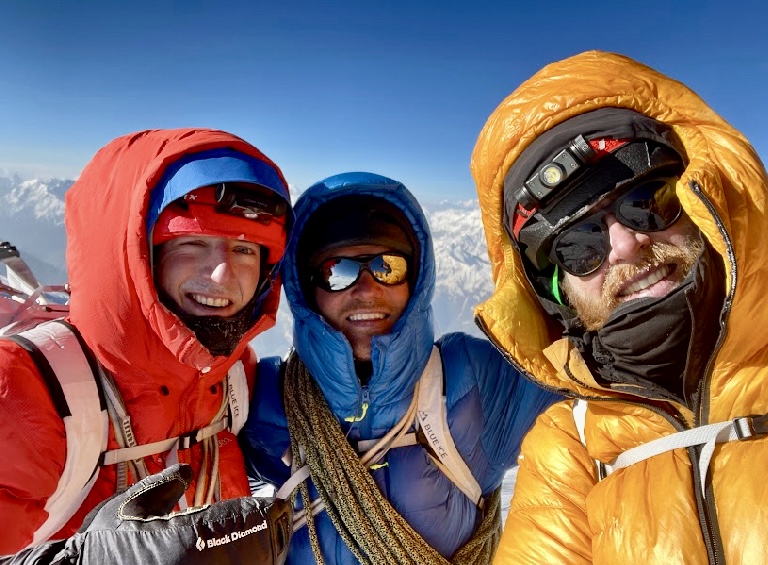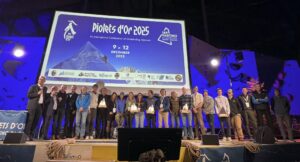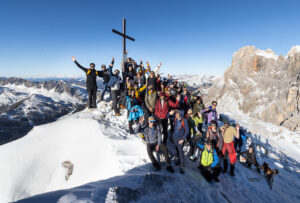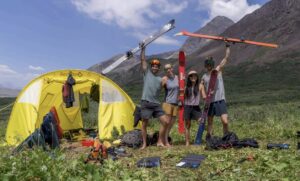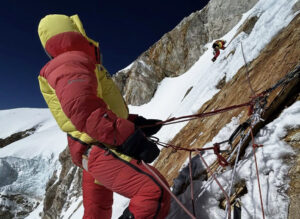Sebastian Pelletti, Ethan Berman, and Maarten van Haeren have returned to civilization after their landmark ascent of the Southeast Pillar of 7,388m Ultar Sar in the Karakoram.
Still in Pakistan, Pelletti described their new Shooting the Moon route to ExplorersWeb, which they graded M5 WI4 3,100m. The climb took place from June 6 to 13 — six days up and two days down, including one weatherbound day.
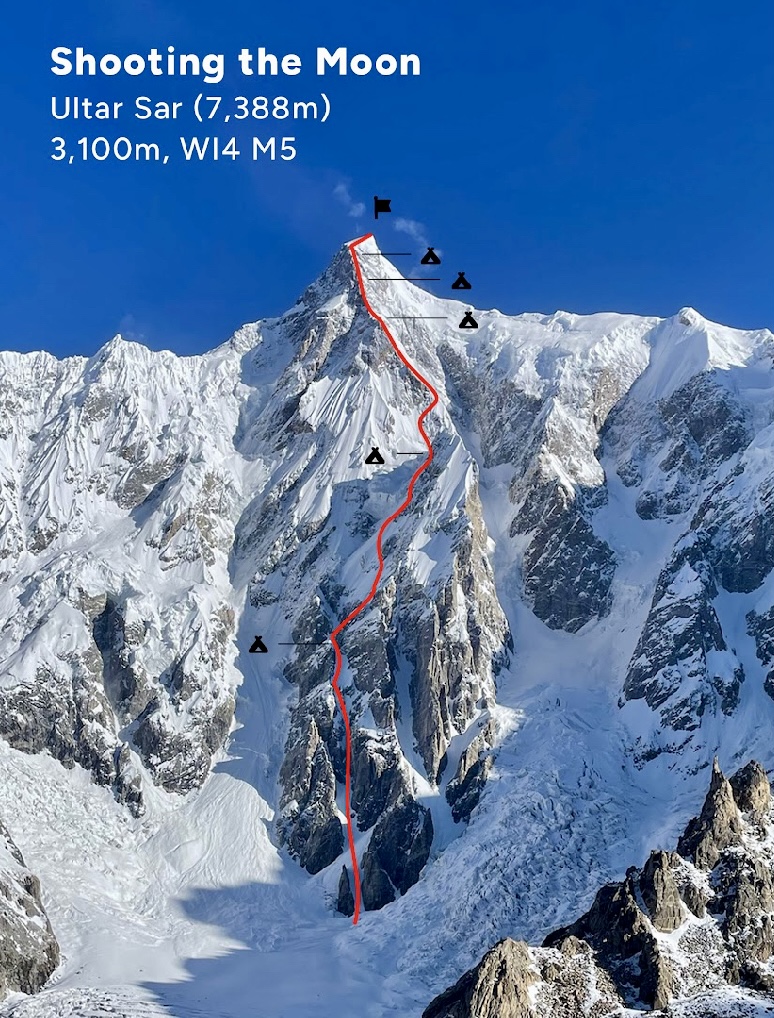
The route up the Southeast Pillar of Ultar Sar. Photo: Sebastian Pelletti/Ethan Berman/Maarten van Haeren
The 3,100m route featured steep snow and ice with a rock pillar between 6,700m to 7,200m. For the first three days, they tried to cover as much elevation as possible between safe bivouacs.
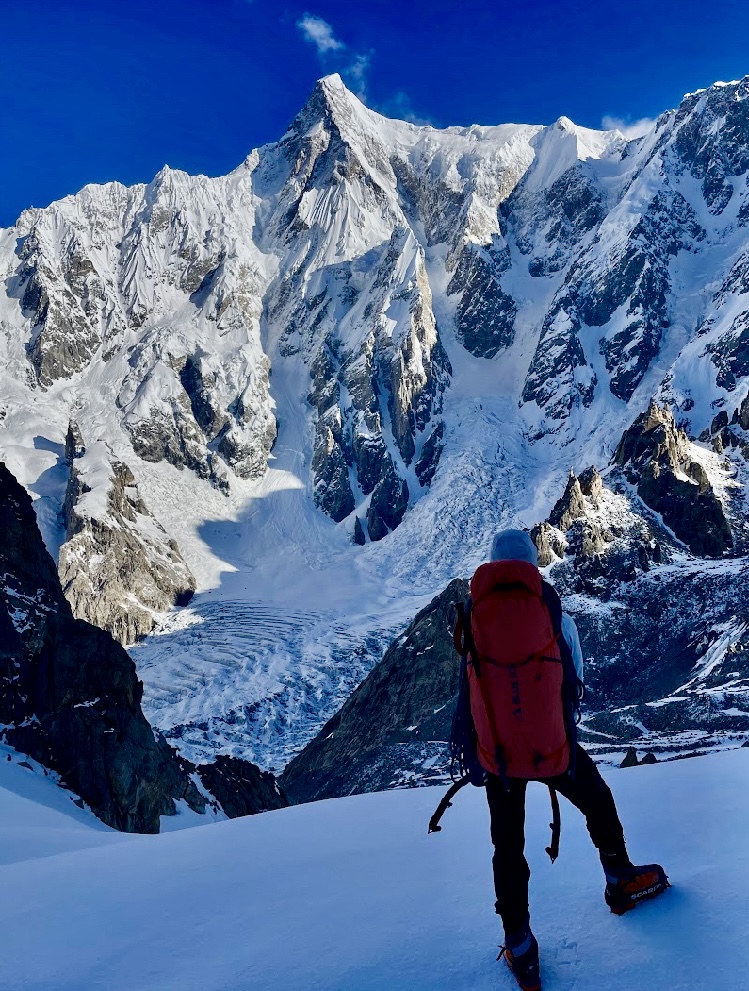
Ethan Berman in front of the Southeast Pillar on their approach from Base Camp. Photo: Sebastian Pelletti/Ethan Berman/Maarten van Haeren
Based on what they learned from their 2024 attempt, they spent a lot of time climbing at night and during the early morning hours to optimize temperatures and conditions. Later in the day, high winds and cloud systems typically rolled through, eliminating visibility and forcing them to stop early.
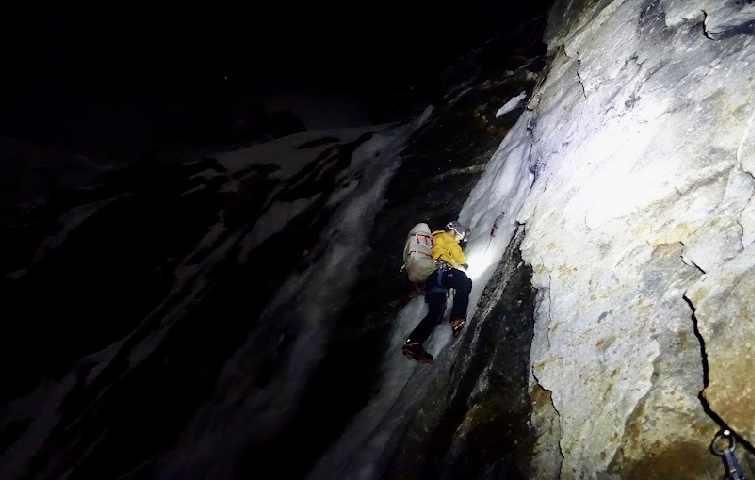
Maarten van Haeren leads a thin ice section at 5,900m at night. Photo: Sebastian Pelletti/Ethan Berman/Maarten van Haeren
Spartan bivouacs
Excavating bivouacs on this pillar proved challenging, but they eventually carved out platforms big enough for the three of them to sleep together in a hammock.
On the third day, they climbed from 5,800m to 6,650m on mostly 70-degree ice. No bivouacs were possible until the base of the rock pillar, which they reached after a long day.
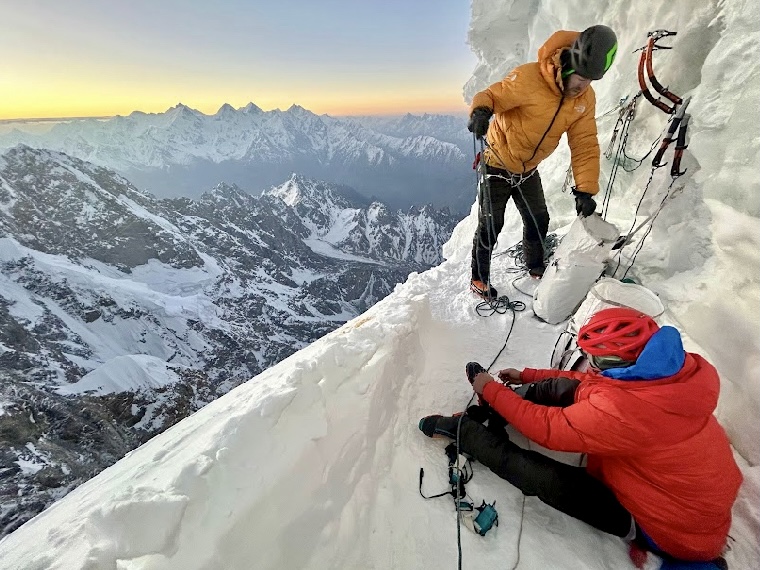
Maarten van Haeren and Ethan Berman work on their 6,650m bivouac after a long day. Photo: Sebastian Pelletti/Ethan Berman/Maarten van Haeren
The rock pillar proved much higher than they had anticipated, and they had also expected the route to have some easier snow slopes. However, apart from the lower entrance fan and the final 200m to the summit, the entire route was steep ice and rock, keeping them on their tools and front points the entire time.
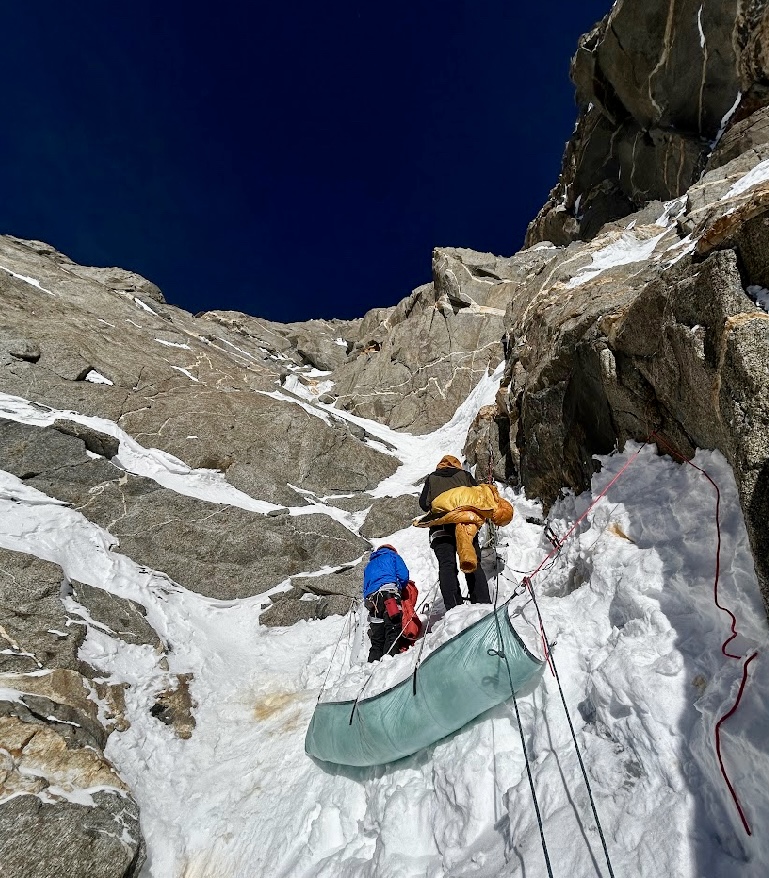
Berman and van Haeren set up their hammock at 7,000m. Photo: Sebastian Pelletti/Ethan Berman/Maarten van Haeren
On day 4, they confronted the crux of the climb — the upper part of the rock pillar. There, mixed climbing up to M5 continued from 6,800m to 7,200m before they gained the final snow slopes.

Sebastian Pelletti below the rock pillar at 6,700m. Photo: Sebastian Pelletti, Ethan Berman, Maarten van Haeren
70+ rappels
After summiting, Pelletti, Berman, and van Haeren went down their ascent line. That afternoon, a storm pinned them down at their 6,650m bivouac. They endured 24 hours of blowing snow before a brief opening in the clouds allowed them to continue down.
By the time they reached 6,000m, the weather had significantly improved. They covered the descent in three stages: the first from the summit to 6,650m, the second (after the weather delay) from 6,650m to 4,300m, and finally, all the way down to base camp in a 31-hour push. They lost count after 70 rappels.
Their timing was exquisite: Back in base camp, a major storm swept through the range for several days.
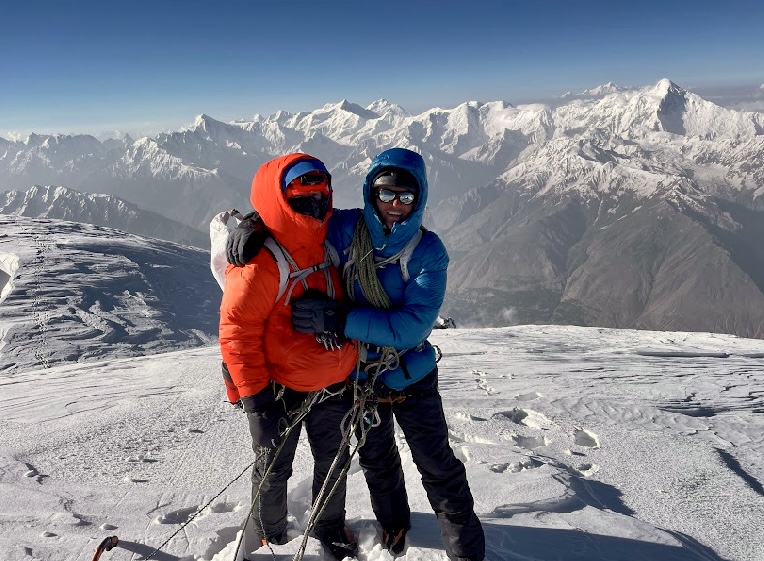
Berman and Pelletti on the summit of Ultar Sar. Diran Peak is in the background. Photo: Sebastian Pelletti/Ethan Berman/Maarten van Haeren
“This feels like the biggest climb any of us has individually done, and we are still processing the experience,” Pelletti told ExplorersWeb. “We’ve all completed multi-day alpine climbs, but this was our first time applying this experience to an objective above 7,000m…We are just super-satisfied in the way we worked together on an objective that seemed too big to contemplate as a whole.”
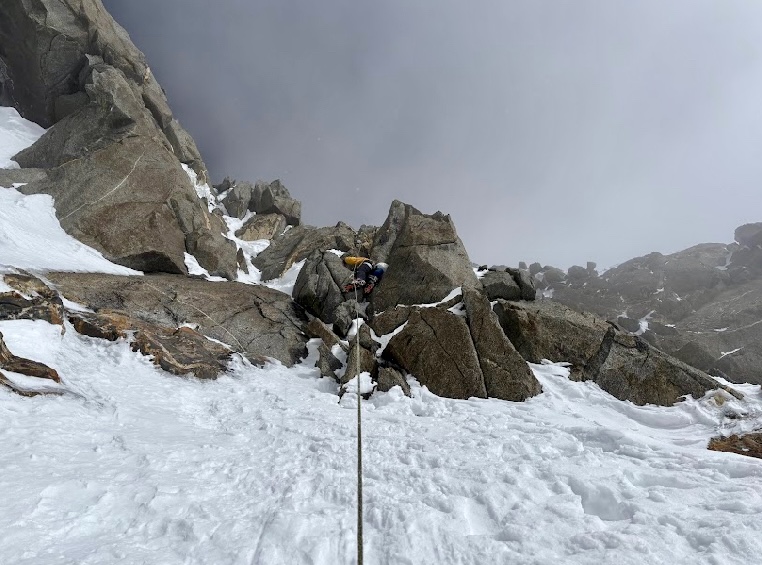
Maarten van Haeren leads the start of the rock pillar at 6,800m. (First M5 crux). Photo: Sebastian Pelletti/Ethan Berman/Maarten van Haeren
The climbers received financial support from the John Lauchlan Award, a Cutting Edge Grant, and the Mazamas Bob Wilson Grant, and logistical support from Pakistan Higher Ground Expeditions.
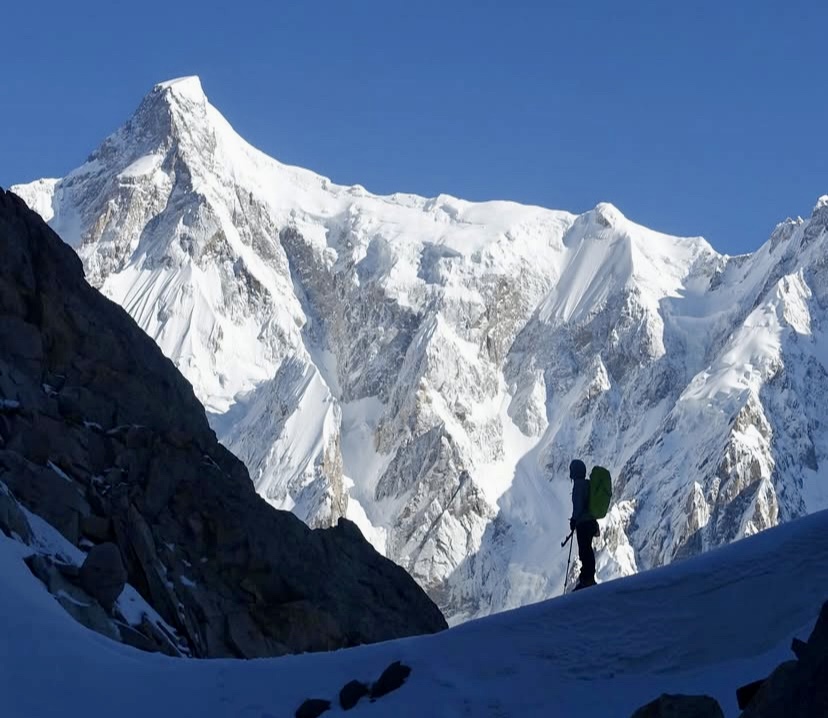
One of the climbers in front of the Southeast Pillar of Ultar Sar. Photo: Sebastian Pelletti
